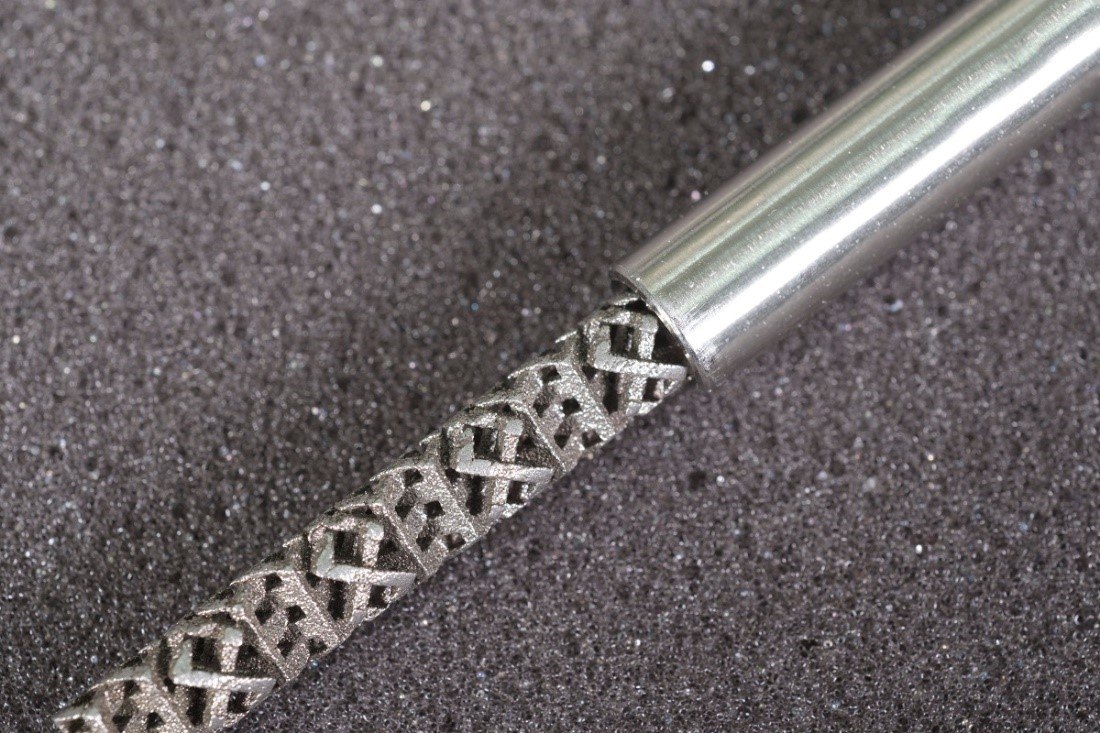Catalytic Static Mixers for Immobilized Catalysts
Introduction to Catalytic Static Mixers (CSMs)
The current methods for employing flow chemistry catalysts effectively use miniaturized packed bed reactor geometries, which pose many limitations. CSIRO, Australia’s national science agency, has developed a new structured catalyst platform for chemical catalysis – catalytic static mixers (CSMs). Unlike conventional fixed bed or slurry systems, CSMs are a novel immobilized catalyst system, based on 3D printed mixer scaffolds containing a catalytic active layer. A variety of different active catalysts can be deposited on the metal mixer, allowing employment in many different classes of chemical reactions, such as hydrogenations, oxidations, C-C couplings and many more.
Catalytic Static Mixers Features and Benefits
- A tubular flow reactor system with static mixer inserts offers greatly enhanced heat and mass transfer, leading to improved process control
- Coated static mixers allow for practical handling and easy catalyst change-over, reducing plant down-time
- 3D printing is a cost-effective alternative for complex mixer structures, when compared to conventional manufacturing methods
- Additively manufactured designs can be tailored to the needs of the fluidic application and optimized by computational fluid dynamics (CFD)
- An open mixer structure is compatible with a range of catalyst deposition methods, enabling a versatile platform which contains many different classes of catalysts for a variety of chemical applications
- Immobilized catalysts eliminate the need for expensive downstream processing, such as filtration and washing
- The CSM deposition methods result in excellent (metallurgical) bonding of the catalyst to the 3D printed scaffold, leading to very low catalyst leaching profiles (<100 ppb of active catalyst in product stream)
- CSM flow reactors provide efficient scale-ability from R&D to production, minimizing process development time
- CSM flow reactors have a low internal hold-up compared to many batch systems, improving process safety
General ‘How to use’ Your Catalytic Static Mixer
CSMs are catalytic reactor inserts comprising of a stainless-steel static mixer scaffold, coated with a catalytically active layer. They can be fitted to standard tubular reactor geometries (metric tubing with a nominal OD of 8 mm and a 1 mm wall thickness, ASTM A213 / A269), as shown in this figure below.

Figure 1.CSM inserted into an 8 mm OD (1 mm wall thickness) steel tubing.
Several CSMs can be operated in series in one tube or in several consecutive tube sections. It is recommended that not more than three CSMs (6 mm dia, 150 mm length) are fitted into one tube section. Depending on the desired throughput for a given reaction, it is recommended to operate between 2 and 20 CSMs in series resulting in a total catalytic pathway length to diameter ratio, L/D, of between 50 and 500. The reactor tubes can be part of an integrated reactor system (e.g. tube bundle reactor) or they can be part of a stand-alone tubing array, fitted with an adequate heating/cooling system (see Additional References below for further information on reactor designs).
The mixer scaffolds are printed from 316L stainless steel powder and can withstand elevated temperatures, pressures and certain solvent and chemical exposure. Depending on the combination of chemicals and process conditions, the maximum recommended operation temperature for CSMs can vary and materials compatibility datasheets for 316L should to be consulted before use. The type of catalytic coating applied to the steel mixer, can limit the operational window further, depending on application; e.g. alumina-type CSMs are not recommended for use under alkaline conditions.
When using CSMs for a liquid phase or liquid/gas phase reaction it is recommended to use an appropriate fluid delivery system to provide the liquid flow, such as positive displacement pumps (e.g. piston pumps, diaphragm pumps, gear pumps, syringe pumps or others).
When using CSMs in a hydrogenation reaction with gaseous hydrogen or in reactions with other hazardous or reactive gases, an adequate gas delivery and handling systems needs to be used to assure safe operation.
Reaction conditions and recommended operation windows can vary greatly and strongly depend on the chemical reaction and the desired outcome (e.g. desired selectivity towards one specific product from a hydrogenation reaction producing several product species). For further information on reaction protocols and conditions please see Additional References below.
Catalytic Static Mixer Applications
CSMs can be used for a variety of heterogeneous catalytic applications, including hydrogenations, oxidations, carbonylations, dehydrogenations, reductive aminations and others, provided the correct catalyst is chosen for the reaction. To date, a large set of different hydrogenation examples have been published using CSM catalysts, including the reduction of alkenes, alkynes, carbonyls, nitro-groups, nitriles, diazo-groups, imines halides, Cbz protection groups and others.
For certain selective hydrogenation applications, great care in the right choice of catalyst and reaction conditions should be taken. One example for such a selective hydrogenation is the case of several reactive moieties per molecule, e.g. mixtures of alkene groups, carbonyl groups, nitro-groups etc. Another example is the selective semi-hydrogenation of alkynes to alkenes or of nitro-groups to oximes. For further information on reaction protocols and conditions please see Additional References below.
Additional References
To continue reading please sign in or create an account.
Don't Have An Account?